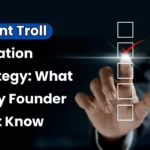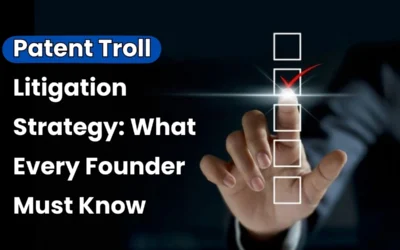
Whenever we hear the name Apple, what instantly comes to mind are its iconic products—the iPhone, AirPods, MacBook, and other sleek innovations that have redefined consumer technology. But beyond the design and hardware, Apple has achieved something equally remarkable: know about that powerful factor from our Apple Patent Monetization Case Study. It has mastered the art of patent monetization. This strategy, often overlooked by the general public, is one of the most powerful engines behind Apple’s market dominance. Apple doesn’t just invent groundbreaking technology; it also protects, monetizes, and strategically leverages its patents to generate billions, block competitors, and secure its leadership position. For business leaders, entrepreneurs, and strategists, Apple’s approach is a textbook example of how patent monetization can change the entire game in global markets.
How Does Apple’s Patent Portfolio Strengthen Its Market Dominance?
Apple has an amazing patent portfolio, considered one of the largest in the global technology industry. In terms of scale, Apple holds an estimated 35,000 to 100,000 patents worldwide, protecting its innovations across multiple markets. The range of these patents is equally impressive, covering hardware design, software algorithms, semiconductors, communication technologies, wearable health systems, and more. This combination of scale and diversity makes Apple one of the strongest players in the world.
When we look at Apple’s strengths, the key lies in securing patents for the technologies that truly define its products and set them apart from competitors, such as:
- Apple Silicon & Processing Power: Protects custom chip designs, GPU architectures, neural engines, and advanced packaging techniques.
- Imaging & Camera Systems: Covers multi-lens configurations, computational photography pipelines, and advanced stabilization technologies.
- Display Innovations: Secures patents on OLED and LCD refinements as well as emerging MicroLED designs.
- Health & Wearable Technologies: Includes heart rate monitoring, blood oxygen detection, fall detection, and biometric tracking systems.
Apple’s strength goes beyond headline innovations—it also patents the supporting technologies that make its ecosystem seamless. From touch gestures, haptic feedback, and animation design to cross-device syncing, secure handoff, and AirDrop protocols, Apple protects every layer of the user experience. Even chip packaging, thermal management, MagSafe charging, and AirPods pairing are covered. This strategy means rivals can’t simply avoid Apple’s core patents; they would have to rebuild entire workflows and ecosystems to compete at the same level.
Read Also: USPTO Enhances Assignment Records Search: New Tool Replaces Legacy Systems by October 2025
Apple’s Patent Monetization Strategies: How IP Becomes Market Power
Apple has mastered the art of transforming patents from legal paperwork into strategic business weapons. Rather than focusing on licensing revenue alone, Apple uses its intellectual property to protect product launches, negotiate better terms, and create barriers to competitors.
- Cross-Licensing & Standards-Essential Patents (SEPs): Apple signs cross-licensing deals with companies like Ericsson and Qualcomm to access critical 4G/5G technologies. These agreements reduce legal battles while securing long-term supply for iPhones and other devices.
- Supplier Settlements & Strategic Licensing: Apple pays for SEP licenses from key suppliers (e.g., Qualcomm, LG) to ensure smooth global compliance. This prevents injunctions and supply disruptions, turning licensing costs into a strategic investment for reliable product launches.
- Defensive Litigation & Settlements: Apple aggressively challenges excessive patent claims, as seen in the VirnetX case, where it avoided a $503M payout. This approach saves billions and discourages “patent trolls,” protecting Apple’s financial and legal position.
- Workaround Redesigns: When faced with restrictions, Apple engineers alternatives to maintain product momentum. In the Masimo dispute over Apple Watch blood-oxygen sensors, Apple redesigned the feature to meet regulatory requirements, ensuring sales continued without interruption.
How Can Apple’s Patent Strategy Inspire Your Business Growth?
- Protect the big and small ideas: Apple doesn’t just patent big inventions like chips or cameras; it also protects small details that make its products work smoothly together.
- Get licenses early: By paying for important tech patents (like 4G/5G), Apple avoids fights in court and keeps its products on the market.
- Trade when it helps: Apple often swaps patent rights with other companies so both sides save money and avoid long legal battles.
- Find workarounds: When Apple faces a ban or dispute, its engineers quickly redesign features so new products keep selling.
- Quality matters more than quantity: Apple focuses on strong, useful patents instead of just filing a huge number with little impact.
Read Also: CGPDTM Recruitment 2025: 86 Deputation Vacancies in Trade Marks Registry
Conclusion
Apple’s success isn’t just about building great products like the iPhone or MacBook — it’s also about how it uses patents as a smart business tool. By protecting its big ideas and small details, securing licenses early, and finding creative workarounds, Apple has built a strong shield around its business. The lesson is clear: patents aren’t just legal papers; they can be a powerful strategy to stay ahead, block competitors, and grow in the market.









